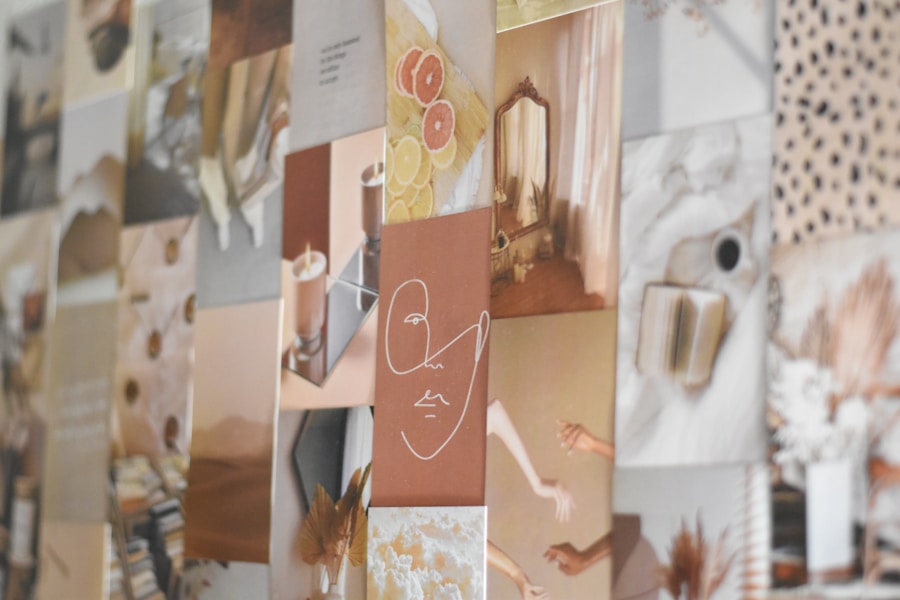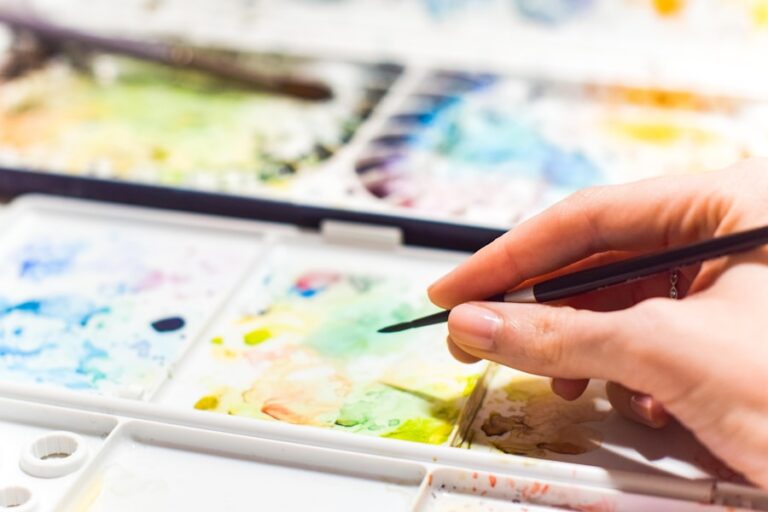The Art of Digital Creation: A Beginner’s Guide to Making Stunning Artwork
Digital art is a form of artistic expression that utilizes digital technology as the primary medium. It encompasses a wide range of artistic styles and techniques, including digital drawing, painting, photography, and graphic design. Unlike traditional art forms, digital art is created using electronic devices such as computers, tablets, and smartphones, as well as specialized software and tools. This allows artists to manipulate and transform their artwork in ways that are not possible with traditional media.
One of the key advantages of digital art is its versatility and accessibility. Artists can easily experiment with different styles, colors, and effects without the need for expensive materials or physical space. Additionally, digital art can be easily shared and distributed online, reaching a global audience in a matter of seconds. This has led to a thriving online community of digital artists who collaborate, share resources, and showcase their work on various platforms.
Choosing the Right Tools and Software
When it comes to creating digital art, choosing the right tools and software is crucial. There are a wide variety of digital art tools available, ranging from basic drawing apps to professional-grade software packages. For beginners, it’s important to start with a user-friendly program that offers essential features such as layers, brushes, and color palettes. Some popular options include Adobe Photoshop, Procreate, and Clip Studio Paint.
In addition to software, artists also need to consider the hardware they will be using. A high-quality graphics tablet or pen display can greatly enhance the digital art-making experience, providing greater precision and control over the creative process. It’s also important to consider the specifications of your computer or device, as some software may require more processing power and memory to run smoothly. Ultimately, the right tools and software will depend on the individual artist’s preferences, budget, and artistic goals.
Learning the Basics of Digital Drawing and Painting
Learning the basics of digital drawing and painting is essential for any aspiring digital artist. While the principles of traditional art still apply, there are unique techniques and tools that are specific to digital media. Understanding concepts such as layers, blending modes, and brush settings is crucial for creating professional-looking artwork. Many artists find it helpful to start with tutorials and online courses that cover the fundamentals of digital art-making.
In addition to technical skills, it’s important for digital artists to develop their own artistic style and vision. Experimenting with different brushes, textures, and color palettes can help artists find their unique voice in the digital art world. It’s also beneficial to study the work of other digital artists and seek inspiration from a wide range of sources, including nature, photography, and traditional art forms. With practice and dedication, artists can develop their skills and create stunning digital artwork that reflects their individual creativity.
Exploring Different Styles and Techniques
Digital art offers endless possibilities for exploring different styles and techniques. From realistic digital paintings to abstract digital collages, there are countless ways to express creativity using digital tools. Some artists may prefer a more traditional approach, while others may experiment with unconventional styles and mixed media. It’s important for artists to push their boundaries and try new techniques in order to grow and evolve as digital artists.
One popular technique in digital art is photo manipulation, which involves combining and altering photographs to create surreal or fantastical imagery. This technique allows artists to create visually stunning compositions that blend reality with imagination. Another popular style is digital illustration, which often features bold lines, vibrant colors, and stylized characters. Whether it’s creating intricate patterns or experimenting with 3D modeling, digital artists have the freedom to explore a wide range of styles and techniques.
Utilizing Layers and Effects for Depth and Texture
One of the key advantages of digital art is the ability to work with layers and effects to add depth and texture to artwork. Layers allow artists to separate different elements of their composition, making it easier to edit and manipulate individual parts without affecting the entire image. This can be especially useful for creating complex illustrations or adding intricate details to a painting. Additionally, artists can use layer blending modes to create interesting visual effects and transitions between different elements.
In addition to layers, digital artists can utilize a wide range of effects to enhance their artwork. This includes filters, gradients, textures, and lighting effects that can add realism and visual interest to a piece. By experimenting with different effects and adjustments, artists can create dynamic and visually engaging artwork that captivates viewers. Whether it’s adding a subtle texture to a background or creating a dramatic lighting effect, the possibilities are endless when it comes to utilizing layers and effects in digital art.
Incorporating Color Theory and Composition
Color theory and composition are essential elements of creating compelling digital artwork. Understanding how colors interact with each other and how they can evoke emotions is crucial for creating impactful visuals. Artists can use color palettes to establish mood and atmosphere in their artwork, whether it’s creating a serene landscape or a vibrant character design. Additionally, understanding composition principles such as balance, focal points, and visual flow can help artists create visually dynamic and harmonious compositions.
In addition to traditional color theory and composition principles, digital artists can take advantage of advanced tools such as color adjustment layers and gradient maps to fine-tune their artwork. These tools allow artists to experiment with different color schemes and tonal variations without altering the original artwork. By incorporating color theory and composition principles into their digital art-making process, artists can create visually stunning artwork that resonates with viewers on an emotional level.
Sharing and Showcasing Your Digital Artwork
Once an artist has created their digital artwork, it’s important to share and showcase it with the world. There are numerous online platforms where artists can display their work, including social media sites such as Instagram, Twitter, and Facebook. Additionally, there are specialized art communities and portfolio websites where artists can connect with other creatives and gain exposure for their work.
In addition to online platforms, many artists also participate in art exhibitions, conventions, and art fairs to showcase their work in person. This provides an opportunity for artists to network with other professionals in the industry and gain valuable feedback from peers and potential clients. Whether it’s selling prints of their artwork or collaborating on creative projects, sharing and showcasing digital artwork can open up new opportunities for artists to grow their careers.
In conclusion, digital art offers endless possibilities for creative expression and experimentation. By understanding the fundamentals of digital art-making, choosing the right tools and software, learning different styles and techniques, utilizing layers and effects for depth and texture, incorporating color theory and composition principles, and sharing and showcasing artwork with the world, artists can create stunning digital artwork that resonates with viewers on a global scale. With dedication, practice, and a passion for creativity, anyone can become a successful digital artist in today’s digital age.







